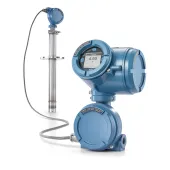Fast-track productivity and efficiency with SOBO iQ

Svendborg Brakes demonstrate how to adopt smart controllers into braking systems for conveyors
EFFICIENT and productive mines and large quarry facilities are characterized by smooth conveying operations. To successfully transfer heavy loads of materials over long distances – both uphill and downhill – conveyors need reliable and responsive braking systems.
Using the latest advances in control technology and data processing, operators are able to monitor and control conveyor braking systems with more precision than ever before, and by improving the efficiency of the material handling network, productivity will improve.
Tilman Speer, international sales manager at Svendborg Brakes, a brand of Altra Industrial Motion Corporation, explains how to adopt smart controllers into braking systems for conveyors.
‘The ability to control the speed, acceleration and deceleration of conveyors is crucial to maximize material handling efficiency. In particular, it is extremely important to avoid abrupt start-ups, prevent conveyors from running backwards when travelling uphill or from rushing downhill under the influence of their load. Braking control is also necessary when operators need to halt conveyors or to avoid issues during power failures.
‘In these situations, the conveyor should not immediately come to a halt. Rather, the brakes should stop it in a gradual and controlled way to protect the powertrain from shock loads – a practice commonly referred to as ‘soft braking’. In this way, it is possible to avoid excessive tension on the conveyor belt and eliminate considerable stress to multiple pieces of equipment, such as rollers.
‘Conventional braking systems, while facilitating controlled stopping and holding, have seldom been able to effectively modulate speed in operation or operate autonomously. Therefore, it is important for operators to explore new technologies that can deliver more responsive and reliable solutions to allow them to maximize productivity and increase equipment service life.
‘In addition to the traditional considerations of brake specification, a modern system should be specified based on its ability to automatically modulate the braking force: regulating the conveyor’s speed, acceleration and deceleration. The most effective way to introduce soft braking is to equip the system with a control system based on a closed-loop feedback mechanism.
‘Closed-loop braking system controllers receive one or more reference signal from sensors associated with the conveyor, such as the conveyor’s torque, speed and/or pressure. The controllers compare the data received with pre-defined setpoints, the results of which trigger a proportional corrective change to adjust the motion of the conveyor accordingly.
‘The best way to manage the data and modulate the braking force involves the use of controllers based on proportional integral (PI) algorithms, such as the SOBO (Soft Braking Option) iQ solution from Svendborg Brakes. By combining proportional and integral responses, these controllers are able to handle the fast dynamics of the braking process in a highly efficient and reliable way.
‘First, the proportional response offers immediate action to address a major difference between sensor data and setpoint. For example, if the conveyor’s speed starts to rise significantly, exceeding the setpoint, PI controllers will need to promptly slow the conveyor by applying an elevated braking force.
‘The proportional action responds quickly, addressing big fluctuations, but cannot get the setpoint and sensor data to precisely match. In fact, the proportional term alone would likely excessively reduce the speed as well as consume more energy.
‘This is why the secondary, integral response is needed. This conducts an averaging operation that filters out small oscillations by taking into account past and present deviations over time. As a result, the controller is able to stabilize the braking force and ensure a gentle stop.
‘Having chosen to utilize PI braking controllers, it is essential to fine-tune the proportional and integral terms, both individually and in relation to one another, to get the most suitable output and response: maximizing performance, productivity and efficiency. This task requires extensive knowledge on how conveyors should move in different situations. This insight can be gained by leveraging the power of Big Data.
‘In systems such as SOBO iQ, all the sensor data points obtained by the braking controllers are accessible and can be used by the operator. In this way, they are empowered to identify key patterns as well as having real-time remote monitoring capabilities to make on-the-fly adjustments when needed. As a result, the system helps operators to implement the Industrial Internet of Things (IIoT) within their facilities.
‘Moreover, Svendborg Brakes have a large installed base of SOBO iQ braking control systems on conveyors around the world. This experience has allowed the company to create a comprehensive and up-to-date data warehouse that can be accessed by the company’s global network of service technicians every time a new control system is installed or commissioned. Once SOBO iQ is set up and the algorithms adjusted, no subsequent fine-tuning is required.
‘By using such systems, operators can create and maintain highly productive, reliable and efficient conveying systems, despite the challenging and unstable operating conditions.’









